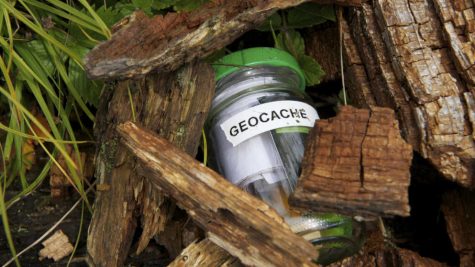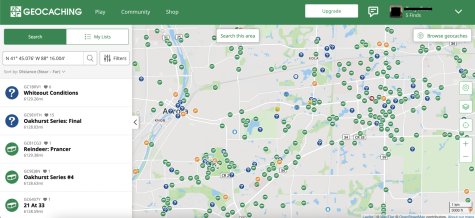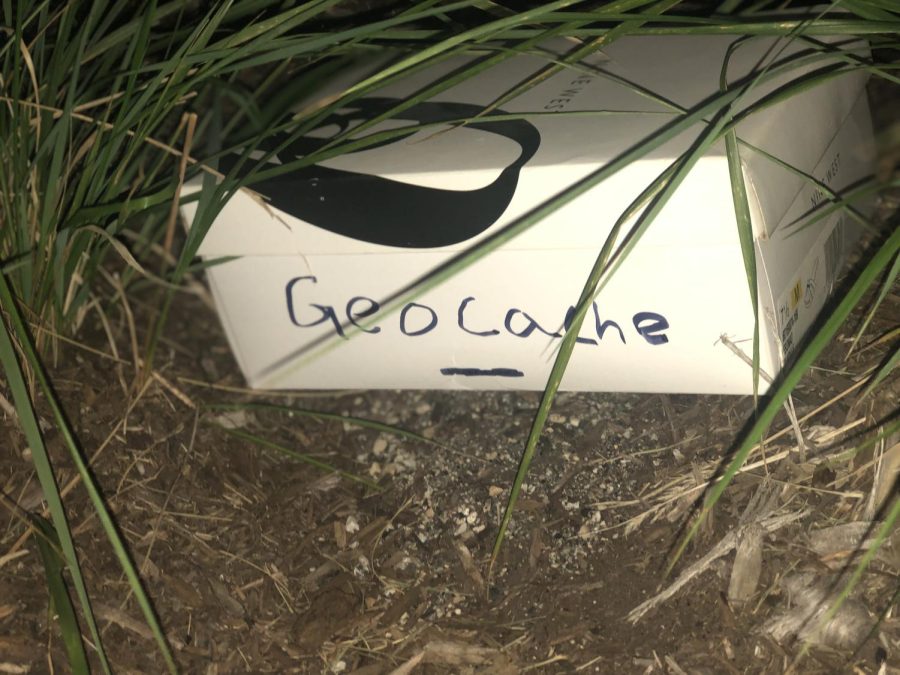The Joy of Geocaching
Geocaches can be found anywhere, sometimes right under your nose.
October 6, 2022
The sticks and branches on the forest floor scratch at his legs as he claws through, but junior Ayush Jain ignores the pain. After all, if his phone’s GPS tells him to go forward, that’s where he will go. Eventually, he reaches the clearing and begins to rummage around in search of the Geocache. Ten minutes later, he is on the verge of giving up. Yet, as he bends down to grab his backpack, he finally spots it in the corner of his eye, hidden inside of the tree’s trunk.
Geocaching is a global phenomenon that began in 2000 by Matt Stum when he first sent out the mailing list titled “GPS Stash Hunt.” National Geographic defines it as “a type of global treasure hunt where people look for caches or hidden stashes of objects.” These caches vary in size, from some being the size of an industrial safe to some being smaller than the length of your thumb. Tanvi Pant is a Metea Valley alumnus and geocaching enthusiast.
“The most memorable caches I have found would be fake magnetic screws, birdhouses, and Tupperware boxes in trees,” Pant said.
Geocaches can be anywhere, from the skyscrapers of urban cities, the parking lots of local grocery stores, all the way to trees of sprawling forests. Chances are, you have walked past a geocache in your life and were none the wiser.
“The first geocache I ever found was beside a road that I drive by daily,” Jain said. “You do not realize how many there are until you start looking.”
Geocaching enthusiasts believe it to be a fulfilling hobby that takes them to places in their neighborhood or city that they otherwise never would have visited. Some go geocaching for fun while traveling abroad as a way of discovering secrets in their new environment. For some, though, the process of geocaching can be difficult to understand.

First off, all geocaches are visible on the geocaching app or website for people to discover. These caches can be placed by anyone with the geocaching app and can take many forms as stated above. To find a cache, one must use their phone’s GPS navigational system to traverse to the location of the cache, where they must then attempt to uncover it. Oftentimes, a cache can be hidden so well that it takes several minutes to discover it, even while standing in its precise location.

Once found, the discoverer ‘logs’ their find by writing their name and the date in the geocache before placing it back exactly where they found it. Then, they are on to the next one.
“My favorite thing about geocaching is going into places I never would have gone otherwise,” Jain said. “The first time I went, a friend and I went deep into a dense forest off the side of a road to find the cache. The feeling of finally finding it hiding in a tree was indescribable.”
To many geocachers, the experience and journey of getting ready, venturing with friends and navigating new areas in search of the cache are far more fun than finding the cache itself. The official geocaching site refers to geocaching as ‘the world’s largest treasure hunt.’
“Anyone can geocache,” Jain said. “It is a universal hobby. Your age, gender, or anything like that does not matter.”









